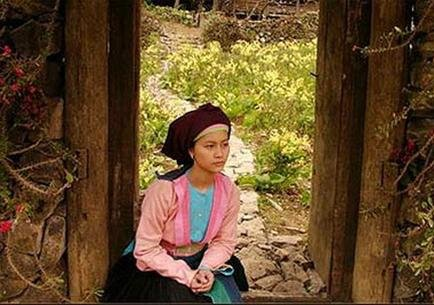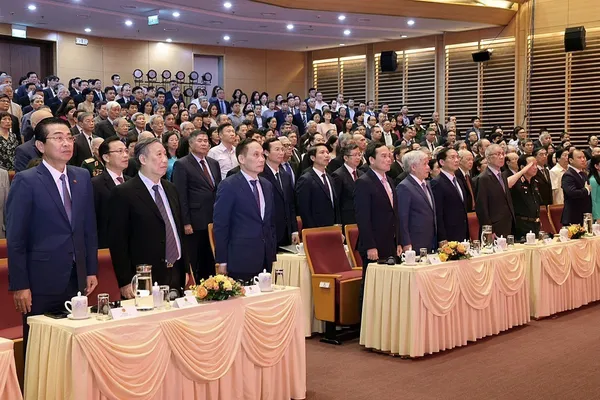 Life & Style
Life & Style

Barbara Trebitsch, former head of Domus Academy in Milan, a leading school in design, fashion and architecture, is currently Italy’s ambassador of design. Culture Vulture caught up with her when she attended the first Italian Design Day to be held in Việt Nam, with exhibitions and workshops held in Hà Nội and HCM City.
 |
| Designer Barbara Trebitsch. VNS Photo Lê Hương |
Barbara Trebitsch, former head of Domus Academy in Milan, a leading school in design, fashion and architecture, is currently Italy’s ambassador of design. Culture Vulture caught up with her when she attended the first Italian Design Day to be held in Việt Nam, with exhibitions and workshops held in Hà Nội and HCM City.
What is the significance of this event?
As you know, Italian brands are famous worldwide in the field of design. I know no other country has organised a similar event to introduce its design brands in other country to create exchange opportunities. Designing, in this context, includes both tangible and intangible notions: concrete products and creative ideas.
Though Italian design industry has a long history, it requires frequent exchanges between contemporary experts in the field to further develop it. Exchanges are not limited to within the country. We seek exchanges with other countries, too.
I’m a fashion trainer, but I come here not to teach but to exchange.
I hope to discuss ideas not only related to the fashion field, but also ways of thinking, the philosophy of Italian people.
Why Italian Design stands out?
This year, at 100 locations around the world, 100 “ambassadors” of Italian culture (designers, entrepreneurs, journalists and critics, as well as communicators and teachers) are participating in discussions on unique aspects – both material and intangible – of Italian design that have retained their distinctive features through the centuries despite a major overhaul in communication and mobility systems. Participants have highlighted creativity and originality, top-quality materials, and superb construction as well as production processes that respect the environment, workers and end users, as also highest quality packaging and advertising.
As an ambassador of Italian design, what is your mission?
As you know, this year, 100 ambassadors have been sent by the Italian government to 100 locations around the world with different duties. My mission here includes introducing Italian fashion, showing how Italian fashion has conquered the whole world. I will also meet with Vietnamese designers, seeking further co-operation between the two nations.
What did you think about Việt Nam before the trip, and after arriving here?
Since I just landed yesterday, I have not had much time to explore, besides taking a walk around the lake and the temple.
I am looking forward to seeing more of Hà Nội before leaving — museums, your shops, the Old Quarter, etc.
Before arriving in Việt Nam I already had an idea of the country, the beauty of nature here, your roots and the cultural richness, as well as the developing fashion industry.
I have not changed my mind. In fact the meetings have reinforced the beliefs.
After seeing people on the streets and meeting Vietnamese designers, what do you think about Vietnamese fashion?
To be honest, I have not had the opportunity yet to experience the streets of Hà Nội, although I would love to. Also, I have not yet visited the boutiques of your designers. However, in meeting and talking with them, I’ve realised there is great passion and elegance in their work. They are sophisticated and willing to do more to enter the international arena.
I think the Vietnamese design industry has a lot of potential. The main thing is that Vietnamese designers should move away from the traditional way of thinking.
Italians, like the Vietnamese, take great care of their appearance whenever they go out.
My mom, for example always takes a second glance to check whether her shoes match her bag and clothes. She wants to look good in others’ eyes.
Italians are very critical, never content with what they have, which is a strong point in their designing outlook.
What do you think about the possibility of introducing Vietnamese fashion in Italy or other parts of Europe?
European consumers tend to prefer typical products from foreign countries, which they can adapt according to their personal style.
I think your traditional áo dài can be a point to start with. But your designers should find a way to adapt the áo dài to modern living.
For example, you can keep the femininity of the áo dài intact in different ways.
Will you follow-up on further co-operation between Italian and Vietnamese designers after the trip?
I truly hope so, since we did discuss today different ways of doing this. I would also like to thank the Italian Embassy in Hà Nội for creating this opportunity and for supporting new means of co-operation between the creative industries in our countries. — VNS









